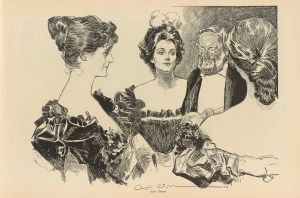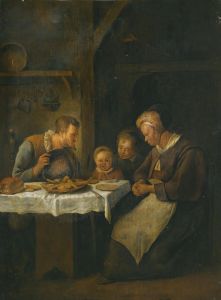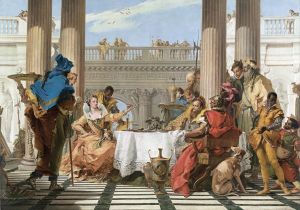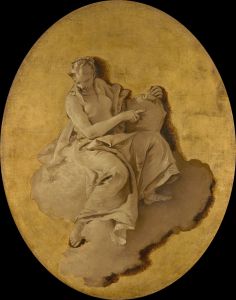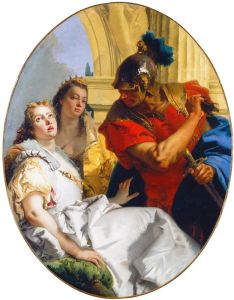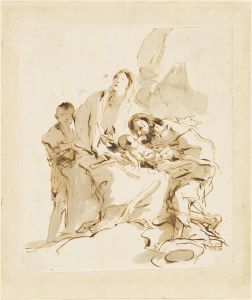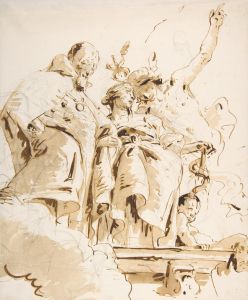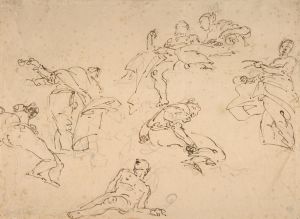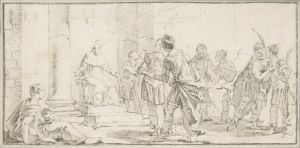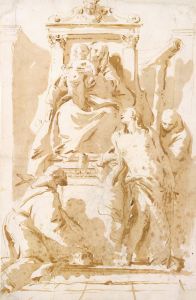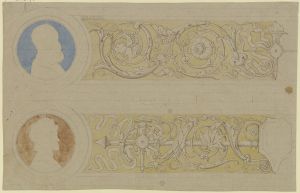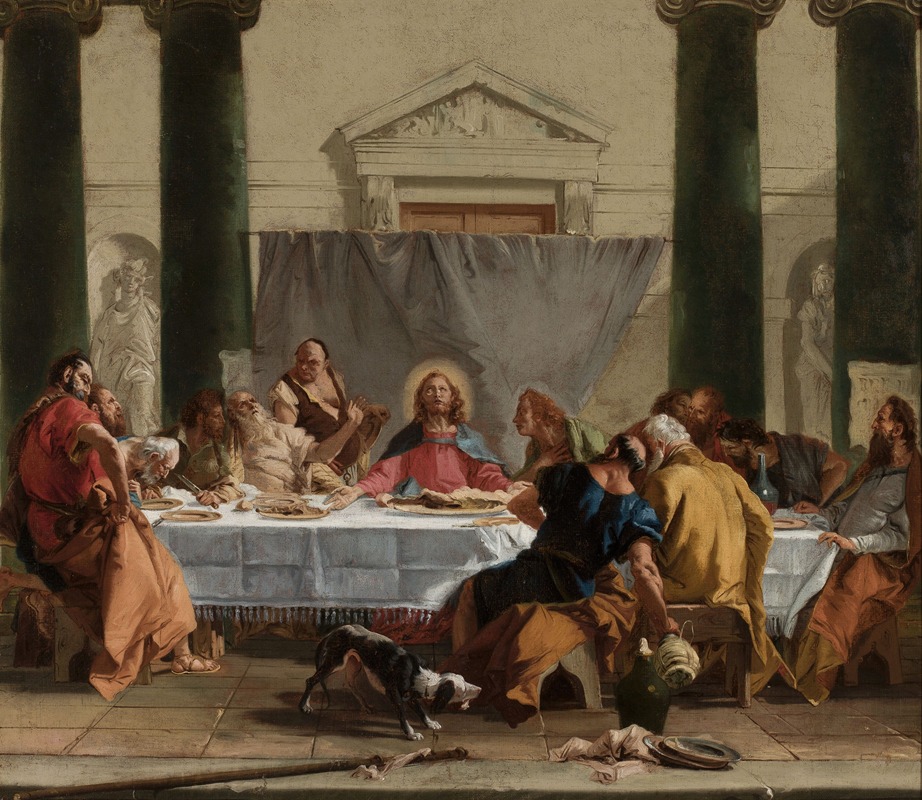
Last Supper
A hand-painted replica of Giovanni Battista Tiepolo’s masterpiece Last Supper, meticulously crafted by professional artists to capture the true essence of the original. Each piece is created with museum-quality canvas and rare mineral pigments, carefully painted by experienced artists with delicate brushstrokes and rich, layered colors to perfectly recreate the texture of the original artwork. Unlike machine-printed reproductions, this hand-painted version brings the painting to life, infused with the artist’s emotions and skill in every stroke. Whether for personal collection or home decoration, it instantly elevates the artistic atmosphere of any space.
Giovanni Battista Tiepolo, an eminent Italian painter of the 18th century, is renowned for his vibrant and dynamic compositions that often depict grand historical and religious scenes. Among his numerous works, "The Last Supper" stands out as a significant piece, although it is not as widely discussed as some of his other masterpieces. Tiepolo's interpretation of "The Last Supper" reflects his distinctive style, characterized by dramatic use of color, light, and perspective, which were hallmarks of the Rococo period in which he worked.
Tiepolo was born in Venice in 1696 and became one of the most important painters of his time, known for his frescoes and oil paintings. His work was highly sought after by European nobility and clergy, leading to commissions in Italy, Germany, and Spain. Tiepolo's "The Last Supper" was likely created during a period when he was deeply engaged with religious themes, a common subject for artists of his era.
"The Last Supper" by Tiepolo captures the biblical scene of Jesus Christ sharing his final meal with his twelve apostles before his crucifixion, a moment that has been a popular subject in Christian art. Tiepolo's rendition is noted for its emotional intensity and the way it captures the varied reactions of the apostles as Jesus reveals that one of them will betray him. The composition is typically dynamic, with a strong sense of movement and interaction among the figures, which is a testament to Tiepolo's skill in conveying narrative through visual art.
Tiepolo's use of color in "The Last Supper" is particularly striking. He employs a palette that enhances the drama of the scene, using contrasts of light and shadow to draw attention to the central figure of Christ. This technique not only highlights the spiritual significance of the moment but also showcases Tiepolo's mastery of chiaroscuro, a technique that plays with light and dark to create a sense of volume and depth.
The setting of Tiepolo's "The Last Supper" is also noteworthy. He often placed his figures in grand architectural spaces, which added a sense of majesty and scale to his works. This approach can be seen in "The Last Supper," where the architectural elements serve to frame the narrative and focus the viewer's attention on the interaction between Christ and his apostles.
Tiepolo's ability to convey complex emotions and interactions through his compositions is evident in this work. Each apostle is given a distinct personality and reaction, from shock and disbelief to introspection and sorrow. This attention to individual expression adds a layer of psychological depth to the painting, inviting viewers to engage with the narrative on a personal level.
While specific details about the commission and current location of Tiepolo's "The Last Supper" are not as well-documented as some of his other works, it remains an important example of his religious art. Tiepolo's influence on the art world extended beyond his lifetime, as his works continued to inspire artists and captivate audiences with their dynamic compositions and masterful use of color and light.
In summary, Giovanni Battista Tiepolo's "The Last Supper" is a testament to his artistic prowess and his ability to bring biblical narratives to life through his unique Rococo style. The painting exemplifies his skill in creating emotionally resonant and visually compelling works that continue to be appreciated for their artistic and historical significance.






